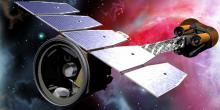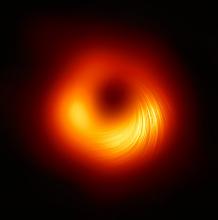Listen to today's episode of StarDate on the web the same day it airs in high-quality streaming audio without any extra ads or announcements. Choose a $8 one-month pass, or listen every day for a year for just $30.
You are here
South Atlantic Anomaly
The Crab Nebula stands high in the west as night falls. It’s far above Aldebaran, the bright orange star that marks the eye of Taurus, the bull. The nebula is the debris from an exploded star — and the brightest source of X-rays in the night sky.
Hitomi, an X-ray space telescope, took a look at the Crab in March of 2016. It was the last thing the Japanese craft ever saw. As it turned toward a new target, its pointing system failed. That led to a series of problems that resulted in the craft spinning so fast that it ripped itself apart.
The whole episode might have been triggered by radiation. Hitomi was flying through the South Atlantic Anomaly — a region from southern South America to South Africa where Earth’s magnetic field is weak. That allows the radiation belts that surround Earth to dip to within about a hundred miles of the surface.
Spacecraft that travel through the region get zapped by charged particles. So Hubble Space Telescope and other craft shut down when they’re passing through.
The anomaly can be a problem for people, too. Astronauts have reported seeing “shooting stars” when they passed through. In fact, the International Space Station carries extra shielding to protect crew members from the radiation.
Recent research suggests the South Atlantic Anomaly has been around for tens of thousands of years. So it’s not likely to leave spacecraft alone anytime soon.
More about Earth’s magnetic field tomorrow.
Script by Damond Benningfield





